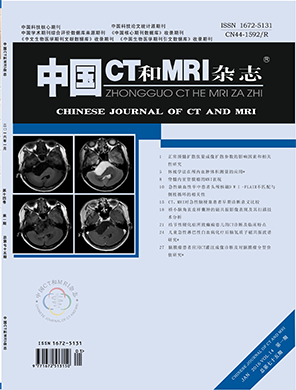Head and Neck Imaging
Factors and Association studies of Diffusion Coefficients in Diffusion Tensor Imaging of Normal Cervical Spinal Cord
Author:CHEN Shi-yue
affiliation:Department of Imaging, the First Affiliated Hospital of the Second Military Medical University, Shanghai 200433, China
PDFAbstract
To investigate the effect of spinal segments, axons and age on apparent diffusion coefficient (ADC) and fractional anisotropy (FA) in normal adult cervical spinal cord magnetic resonance diffusion tensor imaging (DTI). Methods A total of 36 healthy volunteers were enrolled and divided into 3 groups based on age. All subjects were received 3.0 T magnetic resonance imaging (MRI) for cervical vertebra and DTI for cervical spinal cord. According to intervertebral location, cervical spinal cord was defined as superior (C1/2-C2/3), middle (C3/4-C4/5) and inferior segment (C5/6-C6/7). The region of interest (ROI) method was used to detect ADC and FA values of white matter (WM) and gray matter (GM) in cervical spinal cord. Results The values of ADC and FA were significantly different in different segments of WM and GM in healthy cervical spinal cord (P<0.05). The values of ADC and FA were significantly different in different axons of WM (P<0.05). The values of ADC and FA were significantly different between different age groups (P<0.05). The value of ADC in the superior segment of WM front axon was not correlated with age. The value of ADC in the inferior segment of WM front axon was positive correlated with age, and the values of ADC and FA in the rest of regions were negative correlated with age. Conclusions The diffusion and anisotropy in healthy cervical spinal cord are influenced by age, segments and axons. The DTI study of cervical spinal cord disease should be considered comprehensively.
【Keyword】Magnetic Resonance Imaging; Diffusion Tensor Imaging; Apparent Diffusion Coefficient; Fractional Anisotropy
【Chart number】R445.2;R744
【Document Identification Number】A
【DOI】10.3969/j.issn.1672- 5131.2016.01.001
Chinese journal of CT and MRI
th14Volume, th 1 Issue
2016Year01Month

Related articles